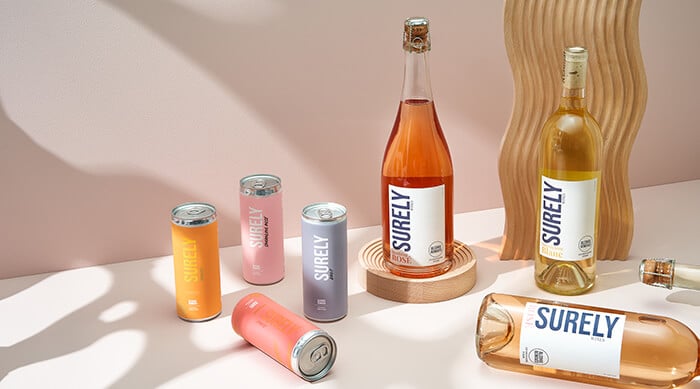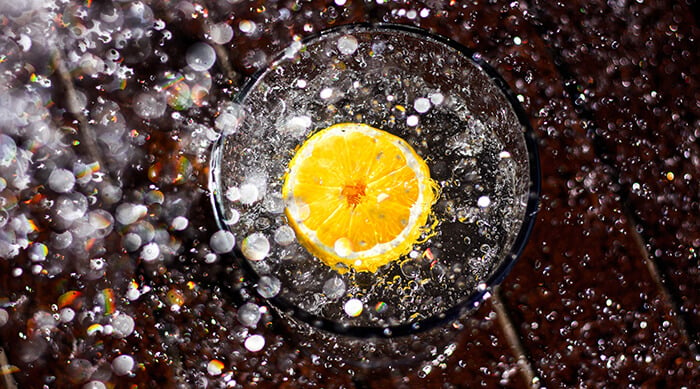There is a growing consumer movement for food and beverage brands to offer more than short-term rewards of flavor and a thirst quench. Consumers want added long-term benefits, as well, turning to health beverages that offer nutrition boosts and other enhancements.
Functional wines are part of that trend as a wide range of products that promise extra benefits in your glass.
What are functional wines?
Functional wines are grape wines that offer added human health benefits over conventional wines. While functional beverages or nutraceuticals are typically non-alcoholic, functional wines are not necessarily alcohol-removed.
If you’re drinking a dry red wine, which already boasts antioxidant-rich resveratrol, a functional red wine may have enhanced levels of the compound for a boost in antioxidant activity.
Natural or biodynamic wines can also be considered functional wines.
They’re wines made with organic grapes and fewer additives than many conventional wines. They lack added sugars, have a lower level of sulfites, even boast more sustainable farming practices in their production.
Dealcoholized wines are also growing in popularity as consumers look to reap the benefits of a glass of their favorite pinot noir without the negative effects of alcohol.
Try a non-alcoholic brut at your next celebration! Not sure how to store the wine you didn't finish? Check out our complete guide.
Potential Benefits of Functional Wines
Depending on the brand, functional wines may boast a number of potential benefits. These benefits may include:
- Lower sulfite levels, a compound that may cause stomach sensitivity or allergy-type reactions in some.
- Enhanced resveratrol content, flavonoids, and polyphenols. These are phenolic compounds linked to a lowered risk of cardiovascular disease and other health concerns.
- Sustainable or biodynamic winemaking methods like no pesticide used on grapes, organic fertilizers, a focus on soil preservation, and dry-farming.
- No added sugar or sugar is limited to the wine’s natural fermentation process, an important benefit for those watching their sugar intake.
- Reduced calories, important to a growing number of adults looking to improve their health and manage their weight.
- Lower alcohol content and retained phenolic composition where the ethanol has been removed
As with any functional beverage, it’s important to evaluate the purported health benefits of wines. That may mean a deeper dive than reading labels when it comes to the type of wine you’re eyeing, as most winemakers won’t reveal all of their secrets on the label.
Conventional Wine vs. Functional Wine
It’s common knowledge to those studying enology, but consumers may not know that in many wines chemicals or corrective additives are often used before they sip the finished product.
Additives are used to adjust for color, acidity, mouthfeel, even aromas in the winemaking process.
It’s why your wine tasting at a certain winery may not vary much from visit to visit. The winemakers have set a standard for that merlot or cabernet sauvignon varietal you’re drinking.
Many additives are deemed safe and acceptable by both the wine industry and local health authorities, but there are some that could give consumers pause.
Red wines already include a high level of anthocyanins, the compounds responsible for their hue. Mega Purple, a grape juice concentrate, is used to darken the color of some red grape varieties and is a frequent mention when it comes to questionable wine additives.
Wines that use the additive are typically high in sugar, and some winemakers say its use goes beyond correction, hiding flaws in a brand’s viticulture.
Functional wines market themselves as being the healthier option over conventional wines, with fewer additives and less manipulation by the winemaker. This can make some organic or natural wines under the umbrella of functional wines unpredictable when it comes to taste and color.
Alcohol-removed red and white wines are more standardized, with flavor consistency as important as the health benefits behind the consumption of less alcohol.
Alcohol-Removed Wines
Some researchers consider the effects of wine when consumed to excess as the reason why wine can’t be a truly functional beverage.
Health benefits are linked to moderate consumption, as with all alcoholic beverages, with more positive outcomes in those who avoid alcohol altogether.
Alcohol-removed wines may then be the answer. Alcohol-removed wines today taste like real wine and retain the health benefits, allowing for better sleep in beverages that are lower sugar and lower calorie.
Young people, in particular, are driving a sober curious movement, with many making a concerted effort to reduce their drinking. Concerns over the health risks of alcohol consumption, including cardiovascular risk, have led to a rise of alternatives, like sober bars.
All of this has translated to impressive sales in the alcohol-removed beverage industry. Numbers from the beginning of this year show low and no-alcohol wine sales are up 27% from the previous year.
Consumer Demand and Market Share
There has been a rise in consumers seeking improved health and wellness and redefined priorities following the global pandemic.
Up to 61% of consumers rank aspirational needs as more important to them today than they were 2 years ago. These needs are focused on wellness, whether that’s eating less sugar, moving more, or exercising more restraint when it comes to things like alcohol.
Consumers are also looking to the beverage and food industry to supplement their wellness needs as much as possible.
Up to 62% of consumers globally are looking for foods and beverages that meet specific health concerns, whether that’s improved gut health or antioxidant capacity.
This has meant impressive sales in the healthy drink brands industry. The functional beverage industry as a whole is expected to grow from a $125 billion industry last year to a $217 billion industry by 2028.
We expect wines labeled as healthy alternatives to show expected market growth.
Organic wine consumption, for example, increased about 48% from 2012-2017, with European countries leading much of that growth. Consumer opinions on sustainability and perceptions of organic wines as a healthier choice are likely behind that trend.
We’ve already mentioned increases in the alcohol-removed wine world. Market share in the United States is still low when it comes to dealcoholized wine, with less than 5% of American households indulging in the trend.
Those increasing sales will still be important to watch for those within the functional food and beverage industry. Zero-alcohol options currently account for 3.5% of the total alcohol market share, which still translates to an impressive $3.1 billion in sales.
The Future of Functional Wines
As consumers continue to embrace health and wellness brands, the demand for functional beverages, even when it comes to wine, will only continue to grow.
A move toward reduced alcohol consumption is key for the future of not only functional wines but alcohol-removed wines, a growing segment of healthy beverages.
We at Surely understand that no matter a consumer’s wine preference, be it a sparkling rosé or pinot noir, the expectations for wine quality are changing. Wine drinkers want real-life benefits with each pour.
Sources
- Reduction of Sulfur Compounds through Genetic Improvement of Native Saccharomyces cerevisiae Useful for Organic and Sulfite-Free Wine
- Health benefits of resveratrol administration
- Organic and biodynamic wines quality and characteristics: A review
- Grape ( Vitis vinifera L.) Seed Oil: A Functional Food from the Winemaking Industry
- Use of Winemaking Supplements To Modify the Composition and Sensory Properties of Shiraz Wine
- In vivo antioxidant activity of grape, pomace and wine from three red varieties grown in Argentina: Its relationship to phenolic profile
- Should Red Wine Be Considered a Functional Food?
- Why are young people drinking less than earlier? Identifying and specifying social mechanisms with a pragmatist approach
- How consumers around the globe aspire to live healthy lives in 2021
- Functional Beverages Market by Type (Rehydration Solutions, Probiotic Drinks, Energy Drinks, Fruit & Vegetable Juices, Herbal and Fruit Teas, Fortified Water, Dairy Beverages, Non-Dairy Beverages and Others), Packaging (Bottle, Sachet, Tin Can,Tetra Pack, and Others), Functions (Weight Management, Hydration, Health & Wellness, Energy & Rejuvenation, and Others), Region, Global Industry Analysis, Market Size, Share, Growth, Trends, and Forecast 2021 to 2028
- Insights into organic wind consumption: behaviour, segmentation and attribute non-attendance
- Somatic Variation and Cultivar Innovation in Grapevine





![Healthy Drink Brands to Try Today [Tea, Soda Swaps & More]](https://dropinblog.net/34240221/files/featured/Healthy_Drink_Brands.jpg)
